Monthly Archives: November 2019

 My niece, Kelli Schulenberg has a list of things she likes that might make many people feel very tired, but Kelli is someone who is on the go a lot. In her own words, Kelli likes “Music, traveling, fitness, animals, and the outdoors. Fresh air, trees, blue skies, summer, and hiking.” Anyone who knows her, know that truer words were never spoken. Kelli likes to stay active, and doesn’t like to waste a moment of her free time. If there’s a concert nearby, Kelli and her husband, my nephew, Barry Schulenberg might jump in the pickup and head for wherever it is being held. They both really enjoy going to concerts.
My niece, Kelli Schulenberg has a list of things she likes that might make many people feel very tired, but Kelli is someone who is on the go a lot. In her own words, Kelli likes “Music, traveling, fitness, animals, and the outdoors. Fresh air, trees, blue skies, summer, and hiking.” Anyone who knows her, know that truer words were never spoken. Kelli likes to stay active, and doesn’t like to waste a moment of her free time. If there’s a concert nearby, Kelli and her husband, my nephew, Barry Schulenberg might jump in the pickup and head for wherever it is being held. They both really enjoy going to concerts.
If there isn’t a concert, Kelli and Barry might be found on Casper Mountain, cross country skiing in the winter, or hiking in the summer. Anyone who knows Kelli very well, knows that she prefers Summer over Winter…every time. And there are a lot of us who totally agree with her whole heartedly on that one. For Kelli, as for many of us, Winter brings with it, a little bit of…depression, for lack of a better word. It’s not that she is depressed, but that the weather is depressing. Because Kelli likes to hike, she feels sad when the winter months hit. For a hiker, cross country skiing really can’t compare to hiking. At least, that’s the way I feel about it.
Kelli loves animals, and her dog, Scout is her current “baby.” Scout can be a trial for Kelli, always wanting to be lazy, when she wants to be active. Nevertheless, he makes up for it with his goofy ways. There is a lot to be said for a dog making his masters laugh. Scout refuses to “adult,” as Kelli would say, so his goofiness is always inspiring laughter in his masters. Scout came to live with Kelli and Barry as a puppy, after their long time dog, Dakota passed away. Scout has lots of potential, but lets face it…right now Scout is no Dakota. I know that Kelli and Barry still miss Dakota very much.

Kelli and Barry have a place out east of Casper, Wyoming. It’s home, but Kelli would love to have a couple of donkeys on it. They are one of her favorite animals. Still, she loves most animals. She has a real heart for them. She loves their antics, their cuddles, and yes, even their naughtiness. I hope that someday Kelli gets her donkeys. I think that would be very cool. Today is Kelli’s birthday Happy birthday Kelli!! Have a great day!! We love you!!
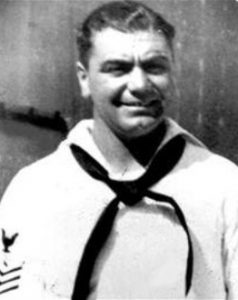 When we think of movie stars, we seldom think of them as soldiers, even if they have played a soldier on television or the movies. Nevertheless, many have served. One of my favorite shows as a kid was McHale’s Navy. McHale was played by Ernest Borgnine, who was born Ermes Effron Borgnino on January 24, 1917, in Hamden, Connecticut. Borgnine was the son of Italian immigrants. His mother, Anna (née Boselli; 1894–c. 1949), was from Carpi, near Modena. His father Camillo Borgnino (1891–1975) was a native of Ottiglio near Alessandria.
When we think of movie stars, we seldom think of them as soldiers, even if they have played a soldier on television or the movies. Nevertheless, many have served. One of my favorite shows as a kid was McHale’s Navy. McHale was played by Ernest Borgnine, who was born Ermes Effron Borgnino on January 24, 1917, in Hamden, Connecticut. Borgnine was the son of Italian immigrants. His mother, Anna (née Boselli; 1894–c. 1949), was from Carpi, near Modena. His father Camillo Borgnino (1891–1975) was a native of Ottiglio near Alessandria.
Borgnine had a normal childhood, and after high school, he enlisted in the United States Navy in October 1935. He served aboard the destroyer/minesweeper USS Lamberton and was honorably discharged from the Navy in October 1941. Then, the 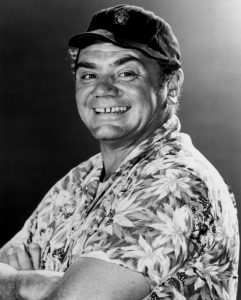 attack on Pearl Harbor on December 7, 1942, changed many things. In January 1942, Borgnine re-enlisted in the Navy. During World War II, he patrolled the Atlantic Coast on an antisubmarine warfare ship, the USS Sylph. In September 1945, he was honorably discharged from the Navy. With the two stints, Borgnine served a total of almost ten years in the Navy and obtained the grade of gunner’s mate 1st class. His military awards include the Navy Good Conduct Medal, American Defense Service Medal with Fleet Clasp, American Campaign Medal with ?3?16″ bronze star, and the World War II Victory Medal. Who knew?
attack on Pearl Harbor on December 7, 1942, changed many things. In January 1942, Borgnine re-enlisted in the Navy. During World War II, he patrolled the Atlantic Coast on an antisubmarine warfare ship, the USS Sylph. In September 1945, he was honorably discharged from the Navy. With the two stints, Borgnine served a total of almost ten years in the Navy and obtained the grade of gunner’s mate 1st class. His military awards include the Navy Good Conduct Medal, American Defense Service Medal with Fleet Clasp, American Campaign Medal with ?3?16″ bronze star, and the World War II Victory Medal. Who knew?
 To me, it seems like all this also prepared him for his most famous television show. As a veteran sailor, he knew how things were run on a ship. Of course, how much of his knowledge could be used on the show depends on the directors. If they had any good sense, they would have used his knowledge, and made the show more realistic. Still, as a kid, I doubt if I would know if it was realistic or not, and after all these years, I can’t say I would recall any of the details. Nor would I know if they were realistic or not. Nevertheless, I always liked the show, and I really liked Ernest Borgnine. I just never knew that he had been a sailor during World War II, or that he had played a part in locating and sinking submarines. I also didn’t realize that he enlisted not once, but twice, or that he served a total of ten years. Years later, on July 8, 2012, after many years as a successful actor, Ernest Borgnine died of kidney failure on July 8, 2012 at Cedars-Sinai Medical Center in Los Angeles, California. He was 95 years old.
To me, it seems like all this also prepared him for his most famous television show. As a veteran sailor, he knew how things were run on a ship. Of course, how much of his knowledge could be used on the show depends on the directors. If they had any good sense, they would have used his knowledge, and made the show more realistic. Still, as a kid, I doubt if I would know if it was realistic or not, and after all these years, I can’t say I would recall any of the details. Nor would I know if they were realistic or not. Nevertheless, I always liked the show, and I really liked Ernest Borgnine. I just never knew that he had been a sailor during World War II, or that he had played a part in locating and sinking submarines. I also didn’t realize that he enlisted not once, but twice, or that he served a total of ten years. Years later, on July 8, 2012, after many years as a successful actor, Ernest Borgnine died of kidney failure on July 8, 2012 at Cedars-Sinai Medical Center in Los Angeles, California. He was 95 years old.
 Whenever disaster strikes, the inevitable souvenir hunters seem to come out of the woodwork. It doesn’t matter that someone, or maybe many someones have died in the tragedy. Souvenir hunters think only of themselves, and the stories they can tell, complete with their “precious” souvenir to back up their story. The whole thing makes decent people nauseous.
Whenever disaster strikes, the inevitable souvenir hunters seem to come out of the woodwork. It doesn’t matter that someone, or maybe many someones have died in the tragedy. Souvenir hunters think only of themselves, and the stories they can tell, complete with their “precious” souvenir to back up their story. The whole thing makes decent people nauseous.
On November 17, 1910, famous aviator and stunt pilot, Ralph Johnstone was performing in an air show in Denver, Colorado, when tragedy struck. Johnstone knew the risks of his occupation, and I suppose that he knew that one day, his “number” would come up. Still, you never really believe that it will happen to you, do you? Johnstone was the holder of the World Altitude Record, and the crowds were never disappointed with the show he gave them. That day, at Overland Park would be no exception.
Johnstone flew a Wright Biplane, and he was knows for his many spiral glides, which had made the Wright aviators famous. Johnstone had won many prizes, and on two occasions had expressed the belief that he would be the first to do real fancy work in the sky…and become in a word, the aviating gymnast and loop an imaginary loop. In the day’s first flight, when he was in the air with his friends, Walter Brookins and Archibald Hoxsey. Johnstone had gone through his usual program of dips and glides, and the plane had perfect control, with no indication of structural problems.
On his second flight, Johnstone rose again, and after a few circuits of the course to gain height headed toward the foothills. “Still ascending, he swept back in a big circle, and as he reached the north end of the enclosure, he started his spiral glide. He was then at an altitude of about 800 feet. With his plane tilted at an angle of 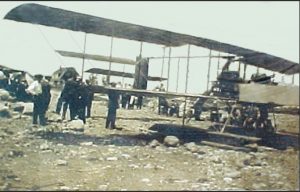 almost 90 degrees, he swooped down in a narrow circle, the airplane seeming to turn almost in its own length. As he started the second circle, the middle spur, which braces the left side of the lower plane, gave way, and the wing tips of both upper and lower planes folded up as though they had been hinged. For a second, Johnstone attempted to right the plane by warping the other wing up. Then the horrified spectators saw the plane swerve like a wounded bird and plunged straight toward the earth.”
almost 90 degrees, he swooped down in a narrow circle, the airplane seeming to turn almost in its own length. As he started the second circle, the middle spur, which braces the left side of the lower plane, gave way, and the wing tips of both upper and lower planes folded up as though they had been hinged. For a second, Johnstone attempted to right the plane by warping the other wing up. Then the horrified spectators saw the plane swerve like a wounded bird and plunged straight toward the earth.”
Witnesses said that “Johnstone was thrown from his seat as the nose of the plane swung downward. He caught on one of the wire stays between the plane and grasped one of the wooden braces of the upper plane with both hands. Then, working with hands and feet, he fought by main strength to warp the planes so that their surfaces might catch the air and check his descent. For a second it seemed that he might succeed, for the football helmet the wore blew off and fell much more rapidly than the plane.”
With one wing of his machine crumbled like a piece of paper, Ralph Johnstone, dropped like a rock from a height of 500 feet into the enclosure at Overland Park aviation field and was instantly killed…nearly every bone in his body was broken. That was when the spectators turned “souvenir hunters.” Scarcely had Johnstone hit the ground before morbid men and women swarmed over the wreckage, fighting with each other for souvenirs. 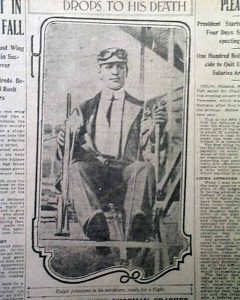 One of the broken wooden stays had gone almost through Johnstone’s body. Before doctors or police could reach the scene, one man had torn this splinter from the body and run away, carrying his “trophy” with Johnstone’s blood still dripping from it. The crowd tore away the canvas from over the body, and even fought for the gloves that had protected his hands from the cold. The scene was utterly disgusting.
One of the broken wooden stays had gone almost through Johnstone’s body. Before doctors or police could reach the scene, one man had torn this splinter from the body and run away, carrying his “trophy” with Johnstone’s blood still dripping from it. The crowd tore away the canvas from over the body, and even fought for the gloves that had protected his hands from the cold. The scene was utterly disgusting.
Johnstone had attempted to cheat death once too often, but “he played the game to the end, fighting coolly and grimly to the last second to regain control of his broken machine.” Fresh from his triumphs at Belmont Park, where he had broken the world’s record for altitude with a flight of 9,714 feet, Johnstone attempted to give the thousands of spectators an extra thrill with his most daring feat, the spiral glide, which had made the Wright aviators famous. The spectators got their thrill, but it cost Johnstone his life.
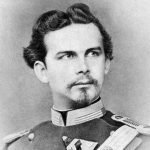
 King Ludwig II, who became king of Bavaria at the young age of 19, in 1864, had what many might consider to be a strange obsession…castles. Of course, for a king to love palaces isn’t totally crazy, but he actually took it to another level, and one that many of us can see to this day. I think I can understand his obsession with castles. Though I have never been in one, I have taken virtual tours of several, and they are beautiful.
King Ludwig II, who became king of Bavaria at the young age of 19, in 1864, had what many might consider to be a strange obsession…castles. Of course, for a king to love palaces isn’t totally crazy, but he actually took it to another level, and one that many of us can see to this day. I think I can understand his obsession with castles. Though I have never been in one, I have taken virtual tours of several, and they are beautiful.
Ludwig was a strange king, I suppose, but while castles should have been rather common things to him, he found them to be fascinating. It’s possible that his obsession began in the breathtaking Hohenschwangau Castle, where he grew up. It seems rather strange for a king, or prince, to really take much notice of such places, but maybe King Ludwig II was as much an architect as he was a king. The Hohenschwangau Castle was originally built in the 12th century, but was destroyed by Napoleon. Ludwig’s father had the castle rebuilt, and it currently looks just like it did in 1836. Maybe young King Ludwig II’s infatuation with castes began as he heard the stories about his home being destroyed and rebuilt.
It is thought that his fascination really began to grow when he took a trip to France and saw the Palace of Versailles and Chateau de Pierrefonds. He returned to Bavaria intent on building a culture there like that of France. Of course, building castles is an expensive venture, and King Ludwig II is said to have neglected his duties as king to follow this new passion, and in so doing, he “racked up” a debt of nearly 14 million marks. I’m sure his people weren’t very happy with him, but as we of the more “touristy” persuasion would have to agree, the castles he created were magnificent.
Among the greatest of his castles are Neuschwanstein and Linderhof. From his bedroom in Hohenschwangau, Ludwig trained a telescope on a ridge to keep an eye on Neuschwanstein as it was being constructed. It is said 
 that Neuschwanstein is the castle that inspired Walt Disney when he created the well-known castle of Disneyland fame. Ludwig’s extravagance and romanticism earned him the nickname of “Mad” King Ludwig. Nevertheless, with their towering turrets in a striking setting, these castles are a huge hit with sightseers. Every tour bus in Bavaria converges on Neuschwanstein and Hohenschwangau, while more tourists flush in each morning by train from Munich, two hours away. Ludwig also commissioned the building of Herrenchiemsee (a partial replica of the Palace of Versailles) and a castle of Falkenstein, but these were never completed.
that Neuschwanstein is the castle that inspired Walt Disney when he created the well-known castle of Disneyland fame. Ludwig’s extravagance and romanticism earned him the nickname of “Mad” King Ludwig. Nevertheless, with their towering turrets in a striking setting, these castles are a huge hit with sightseers. Every tour bus in Bavaria converges on Neuschwanstein and Hohenschwangau, while more tourists flush in each morning by train from Munich, two hours away. Ludwig also commissioned the building of Herrenchiemsee (a partial replica of the Palace of Versailles) and a castle of Falkenstein, but these were never completed.
The homiest of Ludwig’s castles is the small and comfortably exquisite Linderhof, set in the woods 15 minutes from Oberammergau, the Shirley Temple of Bavarian villages (a 45-minute drive from Hohenschwangau). Surrounded by fountains and sculpted, Italian-style gardens, it inspires a feeling of palace envy. Ludwig lived much of his last eight years at Linderhof. He was frustrated by the limits of being a constitutional monarch, so he retreated there. At Linderhof, he was able to live in a private fantasy world where his lavishness glorified his otherwise weakened kingship. He lived as a royal hermit, his dinner table…pre-set with dishes and food…rose from the kitchen below into his dining room so he could eat alone. Beyond the palace is Ludwig’s grotto, a private theater for the reclusive king to enjoy his beloved Wagnerian operas, Here he was usually the sole member of the audience. The grotto features a waterfall, fake stalactites, and a swan boat floating on an artificial lake. The first electricity in Bavaria was generated here, to change the colors of the stage lights and to power Ludwig’s fountain and wave machine.

 Ludwig was king for 23 years. In 1886, being fed up with his extravagances, royal commissioners declared him mentally unfit to rule Bavaria. Days later, he was found dead in a lake. People still debate whether it was murder or suicide. But no one complains anymore about the cost of Ludwig’s castles. Within six weeks of his funeral, tourists were paying to see the castles…and they’re still coming.
Ludwig was king for 23 years. In 1886, being fed up with his extravagances, royal commissioners declared him mentally unfit to rule Bavaria. Days later, he was found dead in a lake. People still debate whether it was murder or suicide. But no one complains anymore about the cost of Ludwig’s castles. Within six weeks of his funeral, tourists were paying to see the castles…and they’re still coming.
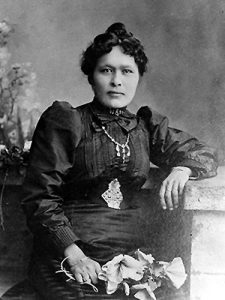 When we think of the gold rush years, we don’t usually think of it in terms of women…at least not women who were there for something other than saloon work. Nevertheless, there were a few women who headed west to actually seek their fortune in gold. The first woman of the Klondike Gold Rush was Shaaw Tláa, also known as Kate Carmack. Strangely, she is rarely mentioned as one of the original discoverers of gold in Bonanza Creek. Nevertheless, in August 1896, she was there with George Carmack, Skookum Jim Mason, and Dawson Charlie when they found little flecks of gold glistening in the creek. Shaaw Tláa was a Tagish Indian woman who was born near Bennett Lake in the Yukon Territory of Canada in about 1857. Her father, Kaachgaawáa, was the head of the Tlingit grow clan, while her mother, Gus’dutéen, was a member of the Tagish wolf clan. She grew up with her parents and seven brothers and sisters near Carcross, Yukon.
When we think of the gold rush years, we don’t usually think of it in terms of women…at least not women who were there for something other than saloon work. Nevertheless, there were a few women who headed west to actually seek their fortune in gold. The first woman of the Klondike Gold Rush was Shaaw Tláa, also known as Kate Carmack. Strangely, she is rarely mentioned as one of the original discoverers of gold in Bonanza Creek. Nevertheless, in August 1896, she was there with George Carmack, Skookum Jim Mason, and Dawson Charlie when they found little flecks of gold glistening in the creek. Shaaw Tláa was a Tagish Indian woman who was born near Bennett Lake in the Yukon Territory of Canada in about 1857. Her father, Kaachgaawáa, was the head of the Tlingit grow clan, while her mother, Gus’dutéen, was a member of the Tagish wolf clan. She grew up with her parents and seven brothers and sisters near Carcross, Yukon.
As a young woman, she married her first cousin, a Tlingit Indian named Kult’ús. Sadly, in the early 1880s, he and their infant daughter died of influenza in Alaska. Kate then returned to her village in the Yukon. In 1887, her brother, Keish, known as Skookum Jim Mason; and her nephew, Káa Goox, known as Dawson Charlie started a packing, hunting, and prospecting partnership with an American named George Washington Carmack. Within a year, she became Carmack’s common-law wife, took the name Kate Carmack, and began to travel with the three men. Beginning in 1889, and for the next six years, the couple lived in the Forty Mile region of the Yukon. There, George Carmack prospected, trapped, and traded, while Shaaw Tláa made winter clothing that she sold to miners. The couple had one daughter, Graphie Grace Carmack, who was born in 1893, at Fort Selkirk.
In August 1896, Kate and George were traveling in remote Canada with her brother, Skookum Jim and nephew, Dawson Charlie. As they made their way back, they stopped to rest beside a Bonanza Creek which emptied into the Klondike River on August 17, 1896. When Skookum Jim bent over to get a drink, he saw flecks of gold 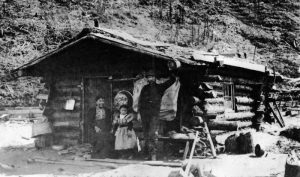 glistening on the bottom. This find would soon set in motion the Klondike Gold Rush. For the next two seasons, George and Kate along with the other two men worked their claims. Beyond that, little changed in Kate’s life. After becoming wealthy, the little family traveled to Seattle and visited George’s sister Rose on her ranch in Cambria, California in the fall of 1898. While they were in Seattle, George flaunted his new found wealth riding around town in a carriage displaying a sign that said, “Geo. Carmack, Discoverer of Gold in the Klondike” and tossing coins to crowds. In the meantime, adapting to big city life was not easy for Kate and at one point she was arrested for making a public disturbance. The Seattle Times was quick to print the story: “Mrs. George W. Carmack, the Indian wife of the discoverer of the Klondike, who is probably the richest Indian woman in the world, was fined $3.60 by Judge Cann this morning for drunkenness.”
glistening on the bottom. This find would soon set in motion the Klondike Gold Rush. For the next two seasons, George and Kate along with the other two men worked their claims. Beyond that, little changed in Kate’s life. After becoming wealthy, the little family traveled to Seattle and visited George’s sister Rose on her ranch in Cambria, California in the fall of 1898. While they were in Seattle, George flaunted his new found wealth riding around town in a carriage displaying a sign that said, “Geo. Carmack, Discoverer of Gold in the Klondike” and tossing coins to crowds. In the meantime, adapting to big city life was not easy for Kate and at one point she was arrested for making a public disturbance. The Seattle Times was quick to print the story: “Mrs. George W. Carmack, the Indian wife of the discoverer of the Klondike, who is probably the richest Indian woman in the world, was fined $3.60 by Judge Cann this morning for drunkenness.”
Within a year, the marriage was falling apart and George sent Kate and Graphie to live with his sister, Rose in California. He never returned. George then went to Dawson, Yukon and continued to flaunt his “discoverer” status. He soon met Marguerite Saftig Laimee, a woman of questionable repute. Representing herself as the owner of a “cigar store,” Laimee was, in fact, the owner of a brothel. But George didn’t care and soon wrote his sister Rose, asking her to send Kate back to her clan, and informing them that he intended to marry Laimee. Kate, however, refused to be tossed aside and made a legal appeal for her share of the couple’s $1.5 million worth of gold discoveries. She sued for divorce on the grounds of desertion and adultery. But, the court didn’t recognize the common-law marriage. In July 1900, Kate and Graphie returned to Carcross. Her brother, Skookum Jim built her a cabin near his and Graphie attended mission and residential schools. Later that year, George Carmack married Marguerite Laimee in Olympia, Washington.
Kate never received her share of any mining riches. In the end, she found herself living off of a government 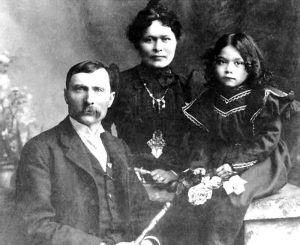 pension and earning a small income from selling needlework to tourists. George still had one last blow to throw at Kate, however. When her daughter Graphie was 16, George lured her to Seattle. It was a devastating loss for Kate, because she firmly agreed with the Tagish belief that children belong with their mother’s clan. She lived the rest of her life in Carcross and died at the age of 63, during a flu epidemic on March 29, 1920. She was buried in the Carcross cemetery. George died a rich man in Vancouver, Canada in 1922. Marguerite inherited his wealth and died in California in 1949. Graphie, married Marguerite’s brother, Jacob Saftig when she was 17. The couple lived in Seattle, Washington and had three children. Later, she divorced Jacob, moved to California, and remarried twice. She died at the age of 70 in 1963 in California. She never saw her mother again.
pension and earning a small income from selling needlework to tourists. George still had one last blow to throw at Kate, however. When her daughter Graphie was 16, George lured her to Seattle. It was a devastating loss for Kate, because she firmly agreed with the Tagish belief that children belong with their mother’s clan. She lived the rest of her life in Carcross and died at the age of 63, during a flu epidemic on March 29, 1920. She was buried in the Carcross cemetery. George died a rich man in Vancouver, Canada in 1922. Marguerite inherited his wealth and died in California in 1949. Graphie, married Marguerite’s brother, Jacob Saftig when she was 17. The couple lived in Seattle, Washington and had three children. Later, she divorced Jacob, moved to California, and remarried twice. She died at the age of 70 in 1963 in California. She never saw her mother again.
 It was a big move for a Milwaukee, Wisconsin girl, but in the end, it would be her undoing. Mildred Fish was born in Milwaukee in 1902, and upon her high school graduation, she studied and then taught English at UW-Madison. It was there that she met Arvid Harnack, a Rockefeller Fellow from Germany. They soon fell in love, and were married in 1926. Because she was a progressive woman and proud of her name, Mildred chose to hyphenate her name, and became known as Mildred Fish-Harnack.
It was a big move for a Milwaukee, Wisconsin girl, but in the end, it would be her undoing. Mildred Fish was born in Milwaukee in 1902, and upon her high school graduation, she studied and then taught English at UW-Madison. It was there that she met Arvid Harnack, a Rockefeller Fellow from Germany. They soon fell in love, and were married in 1926. Because she was a progressive woman and proud of her name, Mildred chose to hyphenate her name, and became known as Mildred Fish-Harnack.
A few years later, she and Arvid both moved to Germany, where she taught and also worked on her doctorate while he worked for the German government. It was during those years that Fish-Harnack became interested in the Soviet Union, where women could choose where to work and also had other rights that women in the United States did not have…a situation which would very soon sound absurd. Nevertheless, at that time, it was so. Throughout the 1930s, Mildred and Arvid, who became increasingly  alarmed by Hitler’s rise to power, began to communicate with a close circle of associates who believed communism and the Soviet Union might be the only possible stumbling block to complete Nazi tyranny in Europe. As the Hitler and the Nazi regime began to come into power, Fish-Harnack and her husband joined a small resistance group, which the Nazi secret police…the Gestapo…would later call the Red Orchestra. This resistance group smuggled important secrets about the Nazis to the United States and Soviet governments and helped Jews escape from Germany. When war was declared in 1941, she did not leave with other American expatriates.
alarmed by Hitler’s rise to power, began to communicate with a close circle of associates who believed communism and the Soviet Union might be the only possible stumbling block to complete Nazi tyranny in Europe. As the Hitler and the Nazi regime began to come into power, Fish-Harnack and her husband joined a small resistance group, which the Nazi secret police…the Gestapo…would later call the Red Orchestra. This resistance group smuggled important secrets about the Nazis to the United States and Soviet governments and helped Jews escape from Germany. When war was declared in 1941, she did not leave with other American expatriates.
Of course, their activities were espionage and would eventually cost them their lives. For his part, her husband, 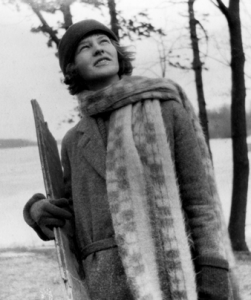 Arvid was hanged in December 1942. Mildred was given a six year sentence, but Hitler refused to endorse her punishment and she was retried and condemned on February 16, 1943. She was beheaded by guillotine. Because of her connection to possible communist sympathies and post-war McCarthyism, her story is virtually unknown in the United States. She was the only American woman who was ever put to death on the direct order of Adolf Hitler for her involvement in the resistance movement. Her last words were, “And I have loved Germany so much.” In the Cold War years after World War II, Fish-Harnack’s name and legacy were not honored in the United States, because she and her husband were believed to have been connected with Communism. For a time they were hated by both of their home countries. Once the truth came out in 1986, that changed and Mildred Fish-Harnack Day was established in Wisconsin. It takes place every year on her birthday, September 16th.
Arvid was hanged in December 1942. Mildred was given a six year sentence, but Hitler refused to endorse her punishment and she was retried and condemned on February 16, 1943. She was beheaded by guillotine. Because of her connection to possible communist sympathies and post-war McCarthyism, her story is virtually unknown in the United States. She was the only American woman who was ever put to death on the direct order of Adolf Hitler for her involvement in the resistance movement. Her last words were, “And I have loved Germany so much.” In the Cold War years after World War II, Fish-Harnack’s name and legacy were not honored in the United States, because she and her husband were believed to have been connected with Communism. For a time they were hated by both of their home countries. Once the truth came out in 1986, that changed and Mildred Fish-Harnack Day was established in Wisconsin. It takes place every year on her birthday, September 16th.
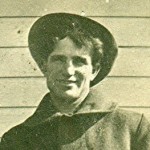
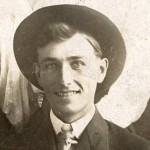 Animal skins were used for clothing and blankets for centuries. People didn’t have other options in ancient times. The fur trade continued into the Old West, and it’s history is filled with stories of adventure, daring, and savage warfare. It is said that being a trapper took a man of strong constitution. It wasn’t a job for sissies. The trappers suffered isolation in the wilderness, and battled constantly against wild beasts and wild men. Many trappers didn’t survive it, and in fact, the majority died in the silence of remote regions.
Animal skins were used for clothing and blankets for centuries. People didn’t have other options in ancient times. The fur trade continued into the Old West, and it’s history is filled with stories of adventure, daring, and savage warfare. It is said that being a trapper took a man of strong constitution. It wasn’t a job for sissies. The trappers suffered isolation in the wilderness, and battled constantly against wild beasts and wild men. Many trappers didn’t survive it, and in fact, the majority died in the silence of remote regions.
One of those men was my grandfather, Allen Luther Spencer. Grandpa, along with his brother-in-law, my Uncle Albert Schumacher decided to become trappers. Northern Minnesota was filled with animals that were perfect for trapping, and they had decided to make their fortune. It was a noble decision, but they really had no idea just how tough it would be. This was not a job for the casual trapper. Most trappings occurred in the great mountains. Here, the trappers spent the larger part of their lives. I don’t think my grandpa and my uncle really had any intention of living their lives in the isolated wilderness. They just wanted to make a living.
They trapped for a time, and really they didn’t do too bad, when it came to trapping, but I don’t think they were prepared for the cold and isolation. Northern Minnesota is one of the coldest places on earth. That would prove to be their undoing. Camping out in a tent in the winter in northern Minnesota…well, it was kind of crazy. I guess in that way, so were they. After a while, they realized just how crazy it was. While they had modest success at fur trapping, they decided that it wasn’t really worth it in the end. I can understand that. If it were just the cold, it might be one thing, but there were the wild animals too. Bears, mountain lions, wolves, just to name a few, while prime furs, are still a force to be contended with. When you pit man against beast, all too often, the beast comes out on top, Of the many trappers in the old west, many went out to trap, and never 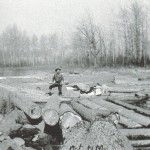
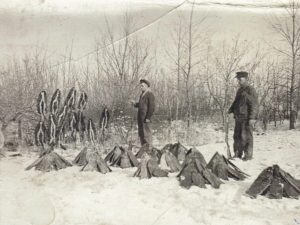 returned…not only never returned, but were never heard from again. I’m glad that was not the fate of my grandpa and my uncle.
returned…not only never returned, but were never heard from again. I’m glad that was not the fate of my grandpa and my uncle.
So, since they were already in the woods in northern Minnesota, and it was an area known for its lumber trade, they decided to abandon the fur trapping business, and go into the lumber business. That turned out to be a far better decision. Not only could they make a decent living, but they were able to sleep in a warm bed at night.
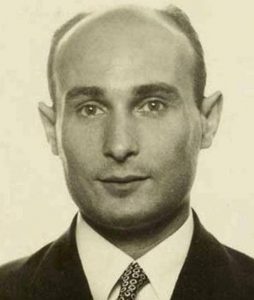 When someone sees something so horrific that the only think left to do is to act, drastic measures must be taken. Juan Pujol Garcia (aka Garbo), is one of the most successful intelligence agents in the annals of warfare. That is an amazing statement, but it is true. Garcia was a Spanish hotel manager who fiercely hated fascism and Germany. Garcia could see the horrific things that the Germans were doing, and he could not tolerate it. Garcia knew what he had to do, so he offered his services at the British embassy. Strangely, the British embassy staff laughed him out of the building, convincing the Spaniard the only way to impress the British was to infiltrate the German intelligence service, Abwehr.
When someone sees something so horrific that the only think left to do is to act, drastic measures must be taken. Juan Pujol Garcia (aka Garbo), is one of the most successful intelligence agents in the annals of warfare. That is an amazing statement, but it is true. Garcia was a Spanish hotel manager who fiercely hated fascism and Germany. Garcia could see the horrific things that the Germans were doing, and he could not tolerate it. Garcia knew what he had to do, so he offered his services at the British embassy. Strangely, the British embassy staff laughed him out of the building, convincing the Spaniard the only way to impress the British was to infiltrate the German intelligence service, Abwehr.
Without the help of the British government, Garcia decided that he had to take matters into his own hands. He headed to Lisbon, involved himself in the intrigue of the Portuguese capital, and was soon sending Abwehr a stream of bogus intelligence supposedly gleaned while traveling through Britain. In truth, he never left Lisbon, and was concocting information from films, newspapers, and even phone books. It was a drastic plan, but the stream of information earned him the trust of the Germans, and the British government finally gave Garcia 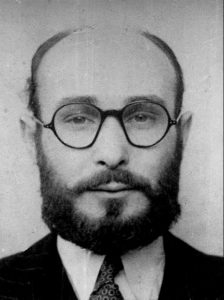 some missions. With this success to his credit, he talked his way into an interview in Britain with MI5. He was given the code name Garbo, after actress Greta Garbo, for his ability to spin convincing narratives out of thin air, and was put to work sending credible disinformation to the Germans.
some missions. With this success to his credit, he talked his way into an interview in Britain with MI5. He was given the code name Garbo, after actress Greta Garbo, for his ability to spin convincing narratives out of thin air, and was put to work sending credible disinformation to the Germans.
Now under cover, Garbo’s crowning achievement was his involvement in the operation to deceive the Nazis about the location of the Normandy invasion. He not only mislead the German high command about the location, but convinced them the D-Day landing was a diversion for an attack elsewhere. Garcia was such an important asset to the Nazis…or so they thought. The Germans even awarded him the Iron Cross, Second Class in July 1944. He also received the MBE from the British in November 1944. He had been a very successful double agent. After the war, Garbo deliberately faded into obscurity, fearing Nazi reprisals, and relocated to Venezuela, where he died in 1988.
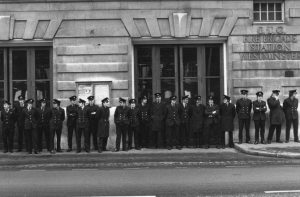 When we think of emergency personnel, we think of people who willingly put their lives on the line for others, and that is a good analogy, but while these people are passionate about their career, it is still a career. They expect, and need to be paid accordingly. Their job is dangerous, and they risk their lives every day, to go out and save other people. Unfortunately, they have to make a living too. For firefighters in England in 1977, the living they were making, wasn’t enough to support their families. So, as often happens, when the pay doesn’t equal the risk, the firefighters went on strike. They were demanding a 30% raise in pay.
When we think of emergency personnel, we think of people who willingly put their lives on the line for others, and that is a good analogy, but while these people are passionate about their career, it is still a career. They expect, and need to be paid accordingly. Their job is dangerous, and they risk their lives every day, to go out and save other people. Unfortunately, they have to make a living too. For firefighters in England in 1977, the living they were making, wasn’t enough to support their families. So, as often happens, when the pay doesn’t equal the risk, the firefighters went on strike. They were demanding a 30% raise in pay.
As the strike began, the 30,000 strong Fire Brigades Union claimed that 97.5% of its members had heeded the strike call and were no longer manning the pumps. It doesn’t take much imagination to realize that without firefighters, the cities were in serious trouble. Talks continued between union leaders and employers, but it didn’t look like there would be an early resolution, because the government insisted there was no breach of its 10% public sector pay ceiling.
As the situation became more critical, troops were brought in to provide emergency coverage of the cities. There was still concern among the soldiers about their lack of training and modern firefighting equipment. They would do their jobs, but that didn’t mean that they would know how to do it well. The reality is that firefighting is a highly skilled job, in which the people are trained, and they know the risks.
The firefighters said that they had already waited two years for the Government to consider their pay claim…and they were done waiting. During that two years, the police department had received a substantial pay rise while firefighters, in line with many others, had to settle for £6 per week. Much of the discussion between the union and employers is focused on the possibility of a reduction in the 48-hour working week, which would allow officers to earn considerable overtime payments.
In many areas firefighters have deserted their stations only reluctantly. Firemen, still wearing their uniforms and pickets armbands, rushed to the scene of a fire at St Andrew’s Hospital in Bow, East London, after a basement storeroom caught light. One of the officers said: “We couldn’t let them die.” And, “It was a hospital, what else could we do but come and help?” A colleague Barry Holmes said: “The situation here was really dangerous and people could have died if we had not come.” Emergency troops arrived at the scene first, and fire officers said afterwards that without their help the building would have burned to the ground.
“Elsewhere in the country, troops averted a major catastrophe on Merseyside when they stopped a haulage depot blaze at Kirkdale spreading to a 500 gallon gasoline storage tank. A woman and her twin sons escaped from a bungalow at Wallington in Surrey after a gas container exploded starting a fire. Troops in a Green Goddess had to drive 25 minutes from Croydon and the house was destroyed. The local fire station was less than three minutes drive away.” The striking firefighters received no strike pay, but got donations from the  public as Christmas approached. The insurance companies picked up the final bill for the dispute with payouts totaling £117.5m compared with £52.3m for the same three months the previous year. The firefighters eventually settled for a 10% increase, taking an average salary to just over £4,000, with the promise of more to come.
public as Christmas approached. The insurance companies picked up the final bill for the dispute with payouts totaling £117.5m compared with £52.3m for the same three months the previous year. The firefighters eventually settled for a 10% increase, taking an average salary to just over £4,000, with the promise of more to come.
Firefighters went on strike again in 2002/2003, in a long-running dispute which included a series of one day strikes over a period of several months. They finally ended with a 16% pay raise that was tied to a modernization package. The Fire Brigades Union chief, Andy Gilchrist said at the time of the settlement it was “a first phase” towards raising a fire officer’s basic pay to £30,000. I say, it was about time.
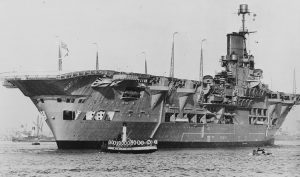
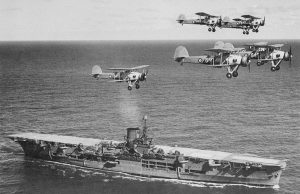 World War II brought with it necessary changes to war ships. Suddenly, the world had planes that could fly greater distances, and even had the ability to land on a ship, provided the ship was big enough to have a relatively short runway. I say relatively short, because the runways on ships seemed like they would be too short to safely land a plane, but they did. One such ship was the HMS Ark Royal.
World War II brought with it necessary changes to war ships. Suddenly, the world had planes that could fly greater distances, and even had the ability to land on a ship, provided the ship was big enough to have a relatively short runway. I say relatively short, because the runways on ships seemed like they would be too short to safely land a plane, but they did. One such ship was the HMS Ark Royal.
The Ark Royal was an English ship designed in 1934 to fit the restrictions of the Washington Naval Treaty. The ship was built by Cammell Laird at Birkenhead, England, and was completed in November 1938. The design of this ship differed from previous aircraft carriers, in that Ark Royal was the first ship on which the hangars and flight deck were an integral part of the hull, instead of an add-on or part of the superstructure. This ship was designed to carry a large number of aircraft. There were two hangar deck levels. HMS Ark Royal served during a period of time during which we first saw the extensive use of naval air power. The Ark Royal played an integral part in developing and refining several carrier tactics.
HNS Ark Royal served in some of the most active naval theatres of the World War II. The ship was involved in the first aerial and U-boat kills of the war, operations off Norway, the search for the German battleship Bismarck, and the Malta Convoys. After Ark Royal survived several near misses, she became known as a “lucky ship” and the reputation stuck…at least until November 13, 1941, when the German submarine U-81 torpedoed her and she sank the following day. Nevertheless, only one of her 1,488 crew members was killed. Her sinking was the subject of several inquiries. While only one man was killed, investigators still couldn’t figure out how the carrier was lost…in spite of efforts to tow her to the naval base at Gibraltar. In the end, they found that several design flaws contributed to the loss. These flaws were rectified in subsequent British carriers. There was, of course, no time to look for the ship then. The war was still going on.
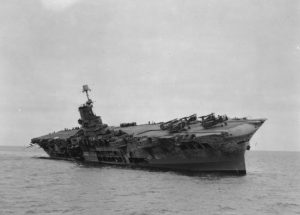
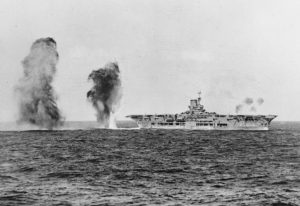
The wreck was discovered in December 2002 by an American underwater survey company using sonar mounted on an autonomous underwater vehicle. The company was under contract from the BBC for the filming of a documentary about the HMS Ark Royal. The ship was at a depth of about 3,300 feet and approximately 30 nautical miles from Gibraltar. So close, and yet so far away.

